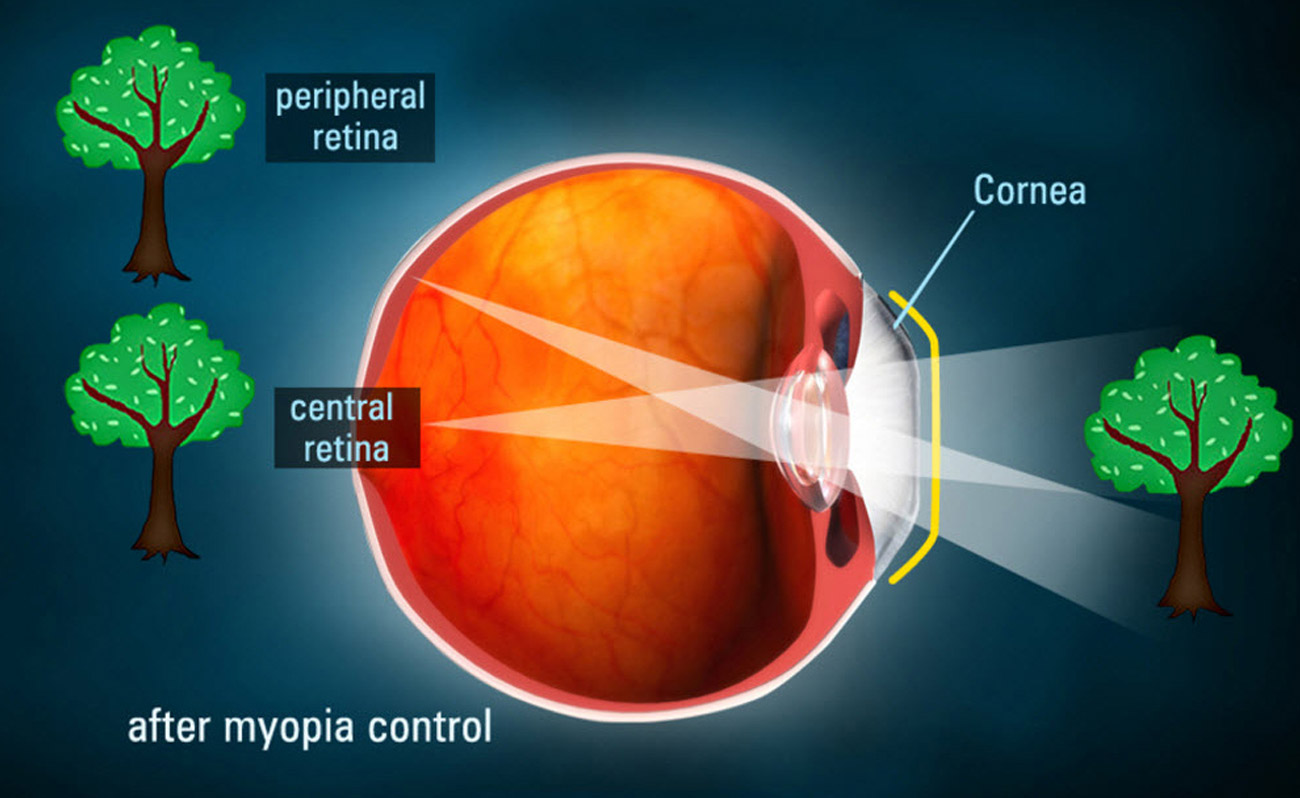Also, Orthokeratology also has the effect of halting or slowing the progression of myopia that is particularly effective for children and adolescents.
That is why wearing these night lenses to correct myopia is the only safe procedure, accepted by ophthalmologists, to stop the progression of myopia in children.
Modern Orthokeratology uses gas-permeable contact lenses (i.e. allow Oxygen to pass through the lens) to effectively reduce mild and moderate myopia and especially to slow the progression of myopia in children and adolescents.
The Lens, carried during the night, remodel the cornea reversibly and so daytime vision is perfect.
The underlying principle in Orthokeratology:
Orthokeratology uses contact lenses with “inverse geometry”, which leads to mild flattening of the cornea, reducing the power of focusing the eye and thus reducing myopia. Since corneal flattening can be accurately controlled, it will lead to correct image focusing and will compensate for refractive errors. After the night lenses are removed from the eye in the morning, the cornea retains its flattened shape for much of the day or for the rest of the day. The Night Lens should be used every night to maintain flattening of the cornea, otherwise myopia will return to the pre-treatment level.
Applying Menicon Night Lens on the Eye and wearing it for several hours during the night shapes the cornea through the tear film
Advantages:
• the Corona Modeling is a totally reversible process in contrast to laser refractive surgery
• Freedom and perfect viewing quality throughout the day without glasses or contact lenses
• Decreases dramatically or even stops the progression of myopia in children and adolescents
• No allergies, no dry eyes or dust in the eyes especially when working in front of the computer
• The eye has perfect oxygenation during the night thanks to the revolutionary material from which the lens is produced
• It is the only Ortho-K lens in the world that allows the correction of astigmatism
• The right eye lens is pink and that for the blue left eye, so it’s easier to differentiate lenses and can be easily applied
• The effect is completely reversible when the night lens is no longer worn
In the past
The procedure was used in the early 1960s, when physicians noticed that the sight of some contact lenses had improved after wearing them. In Chinese history it was said that sandbags were placed in the eye at night in an effort to prevent myopia, although this was likely to cause glaucoma. Initially, only old fashioned materials (PMMA) were used.
In the present
Now, with the emergence of new generation polymers, computer-assisted lathes, and the technological advancement of procedures, it is possible to reduce myopia within a few days. This high tech version of Orthokeratology is known under several names. Among these are:
• Accelerated Orthokeratology
• Vision modeling treatment
• Corneal refractory therapy
• Corneal corrective lenses
• Gentle modeling of the vision
Children and adults
They can be treated by Orthokeratology because the principle of flattening the cornea is particularly effective. In fact, Orthokeratology can especially benefit children. Myopia control is used to slow down or stop the increase in the axial length of the eye, which occurs in growing children and becomes more short-lived with each year. This can result in a lower prescription, so the baby will not have to wear glasses that would be needed until he becomes a teenager.
Cornea
The cornea makes about two-thirds of the total eye power concentrate light on the retina at the back of the eye.
In the case of myopia, flattening the cornea at night by wearing the Night Lens makes the vision can be restored for a period of time (about 1 day or 10-12 hours).
This improvement is temporary; therefore these lenses should be used at night to maintain the therapeutic effect of reducing myopia. This flattening is accomplished by compressing the outer layer of the central cornea. The flattening value is about 6 microns for.

